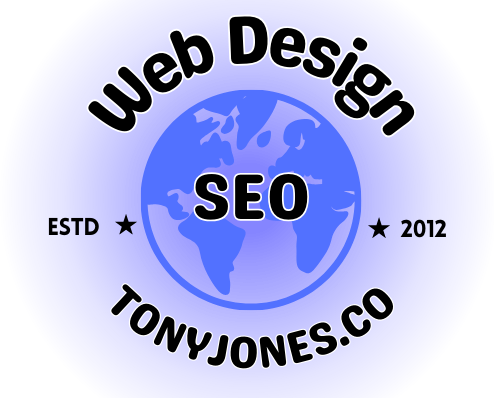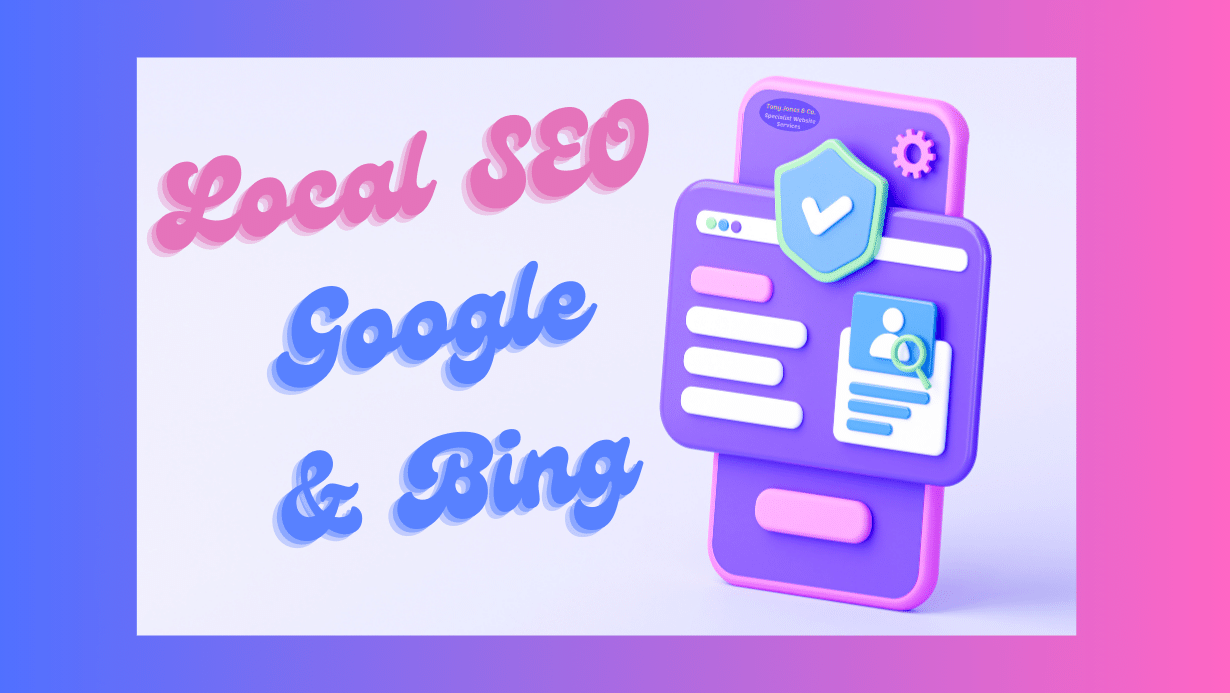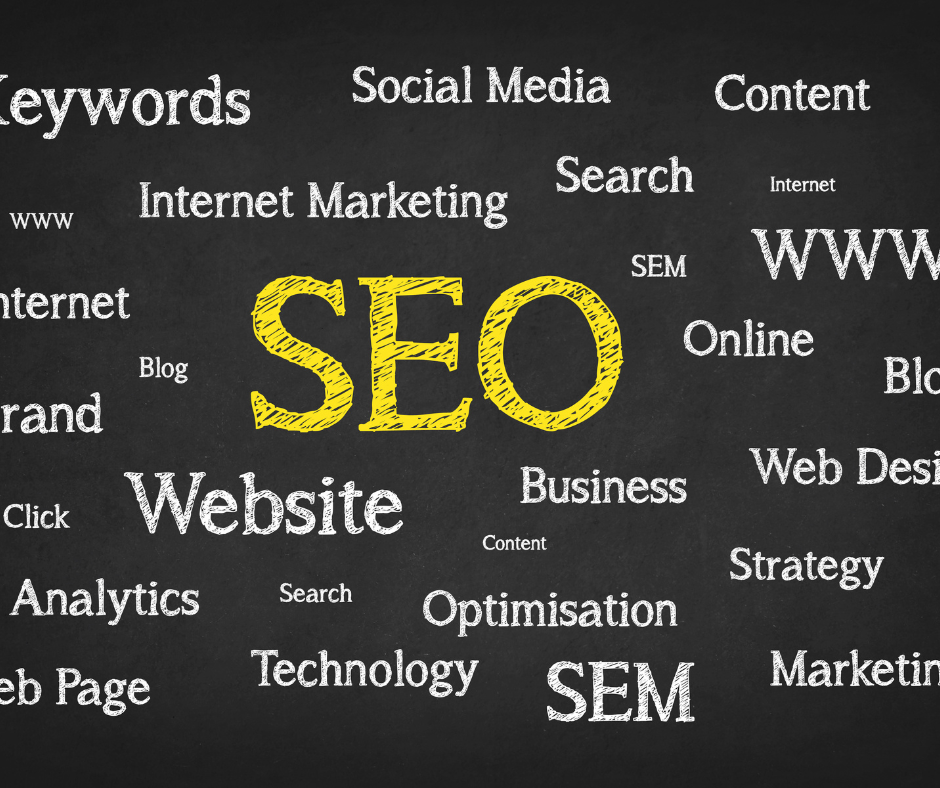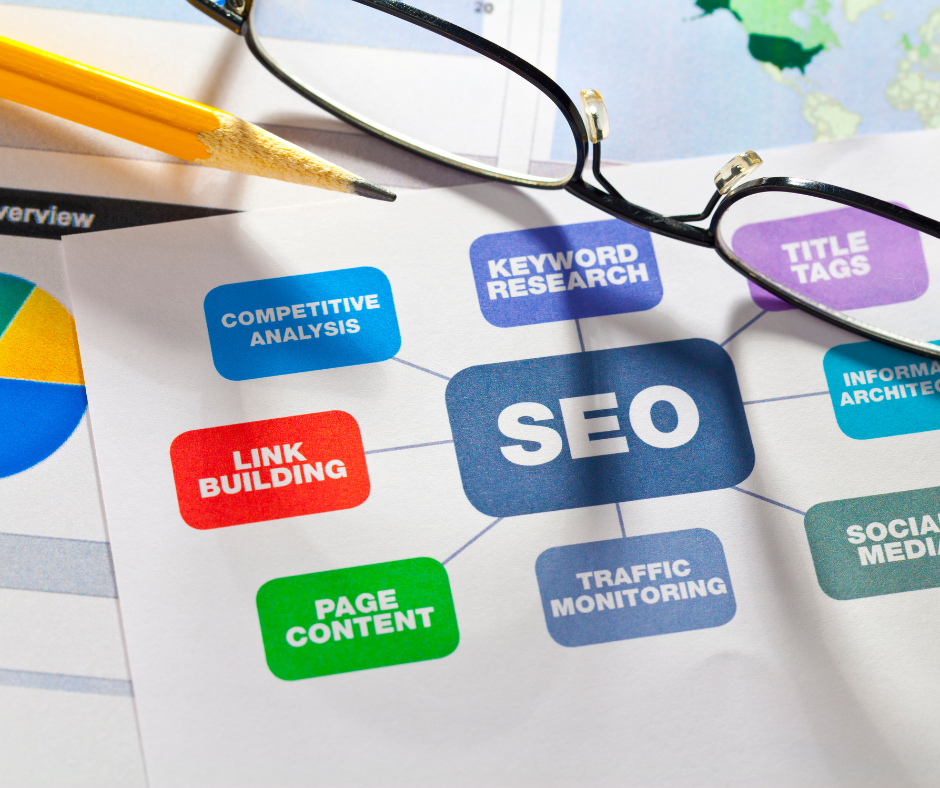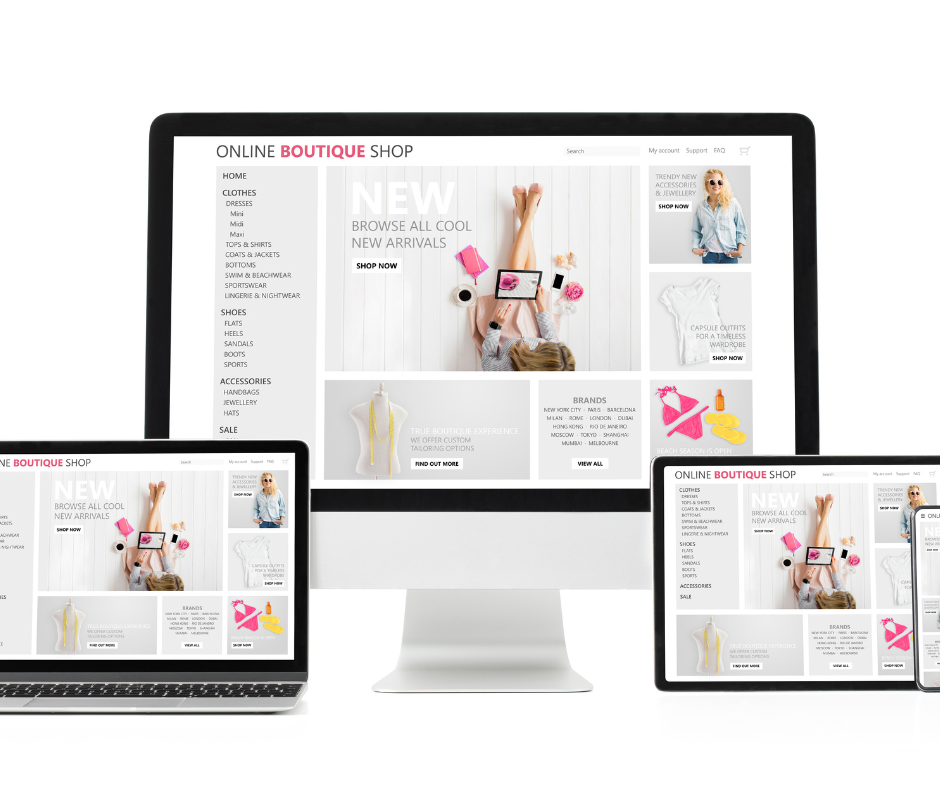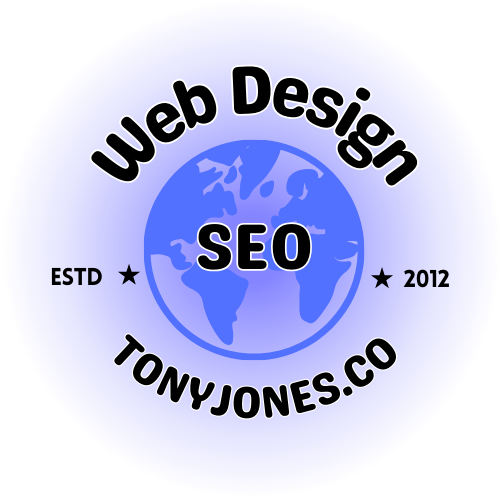Web Designer Wrexham, Professional Website Services - Tony Jones CITP, FBCS.
The Power of Typography: Enhancing Your Website's Visual Appeal
How can I optimize typography for SEO and user experience?
To optimize typography for SEO and user experience, focus on using relevant keywords in headings and body text. Ensure that your typography is legible, accessible, and enhances the overall user experience. Additionally, consider factors such as page load speed and mobile-friendliness to improve SEO and user satisfaction.
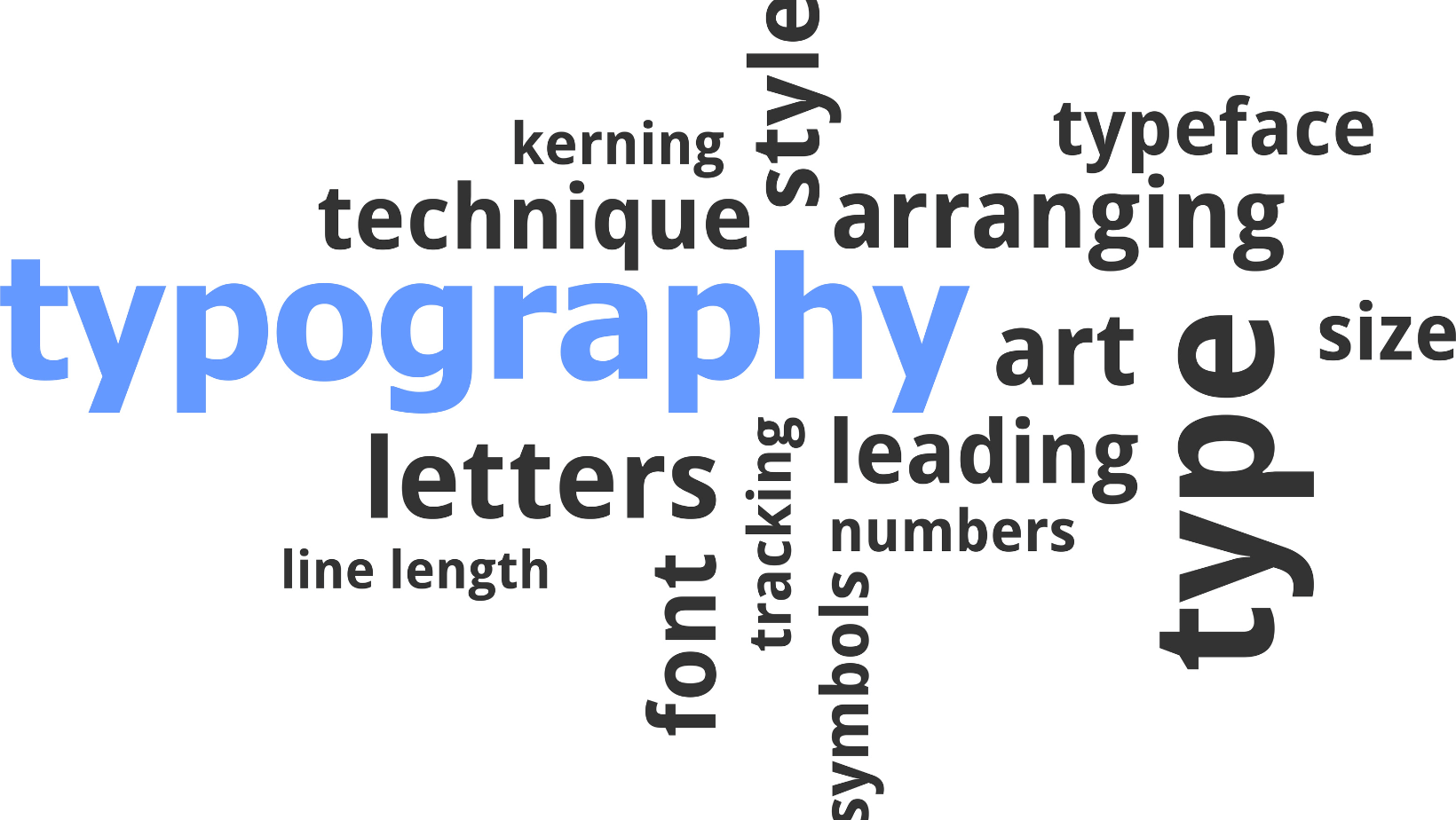
The Role of Typography in Web Design
Typography plays a crucial role in web design as it contributes to the overall user experience and aesthetics of a website. The right choice of fonts, font sizes, and spacing can significantly impact how content is perceived and consumed by users. A well-designed typographic layout can enhance the readability and accessibility of the text, ensuring that the message is effectively communicated to the audience.
Furthermore, typography helps in creating a visual hierarchy on a web page. By using different font styles, sizes, and weights, designers can guide the users' attention and direct them to the most important information or call-to-action buttons. Additionally, typography can also be used to convey the personality and brand identity of a website. Whether it’s a minimalist sans-serif font for a modern and sleek look or a decorative script font for a more playful and artistic feel, the choice of typography sets the tone and mood of the website.
Understanding Different Typography Styles and Their Impact
Typography plays a crucial role in web design, as it has the power to convey emotions, capture attention, and enhance the overall user experience. Understanding the different typography styles and their impact is essential for designers to effectively communicate their message.
Serif fonts, characterized by the small lines protruding from the ends of each letter, are often associated with tradition, elegance, and authority. Their timeless appeal makes them a popular choice for websites aiming for a more formal and sophisticated look. On the other hand, sans-serif fonts, without the decorative lines, are known for their simplicity and modernity. They are often used in contemporary web design, conveying a clean and minimalist aesthetic. Additionally, script fonts mimic the look of handwriting, adding a personal touch and a sense of creativity to the design. However, designers need to be cautious when using script fonts, as they can be difficult to read in smaller sizes or on certain screens.
Choosing the Right Fonts for Your Website
When it comes to choosing the right fonts for your website, there are several factors to consider. First and foremost, you want to ensure that the fonts you select are legible and easy to read. This is especially important for long paragraphs of text, as illegible or hard-to-read fonts can quickly turn visitors away from your site. Additionally, it's important to choose fonts that are compatible with a wide range of devices and browsers. This will ensure that your website looks consistent and professional, regardless of how it's being accessed.
Another aspect to consider when selecting fonts is the overall aesthetic and personality you want to convey. The fonts you choose should align with your brand image and create a cohesive visual identity. For example, a professional and corporate website may opt for sleek and modern fonts, while a more playful and creative website may lean towards whimsical or hand-drawn fonts. It's important to strike a balance between visually appealing fonts and readability, finding the fonts that effectively communicate your brand's personality while still being easy to read.
The Importance of Font Size and Line Spacing
Font size and line spacing play a crucial role in enhancing the readability and overall user experience of a website. The size of the font directly impacts how easy or difficult it is for users to read the content. Choosing an appropriate font size ensures that the text is easily legible without straining the eyes. A font size that is too small can force users to squint or zoom in, leading to a frustrating browsing experience. On the other hand, using a font size that is too large can disrupt the visual hierarchy of the page and make it challenging for users to scan or skim through the content.
Equally important is the line spacing, also known as leading, which refers to the vertical space between lines of text. Adequate line spacing is necessary to prevent the text from appearing cramped and cluttered. When line spacing is too tight, the text can become difficult to read, and users may lose their place while reading. However, overly generous line spacing can create too much distance between lines, causing fragmentation and difficulty in following the flow of the text. Striking the right balance between font size and line spacing ensures that users can effortlessly read and comprehend the content, improving the overall user experience of a website.
Creating Visual Hierarchy with Typography
Typography plays a crucial role in creating visual hierarchy on a website. By strategically selecting fonts and adjusting their sizes, designers can guide users' attention to the most important elements on a page. One effective way to establish hierarchy is through the use of headline and body text. Headlines, typically larger and bolder, draw immediate attention and serve as the primary focal point. They can be used to introduce key information or highlight important sections. On the other hand, body text, usually smaller and less prominent, supports the headlines by providing more detailed content or additional context. Through this contrast in size and style, typography helps to visually prioritize content and guide users through the page in a structured manner.
In addition to size, font weight can also be used to establish visual hierarchy. Bold or heavier fonts naturally draw more attention and can be utilized for important headings or statements. On the other hand, lighter or regular font weights can be used for less critical information, allowing them to blend more harmoniously with the overall design. By varying the weight within a typography system, designers can effectively differentiate between the importance levels of different elements, thereby enhancing the visual hierarchy of the website. Overall, the deliberate use of font sizes and weights in typography plays a significant role in creating a clear and organized visual hierarchy for users to navigate and understand the content of a web page.
Using Typography to Convey Brand Personality
Typography plays a crucial role in conveying the personality of a brand through its website. The choice of fonts, their styles, and sizes can all contribute to creating a cohesive and distinct brand identity. By carefully selecting typography elements that align with the brand's values, tone, and target audience, designers can effectively communicate the desired brand personality to users.
When using typography to convey brand personality, it is important to consider the overall visual appeal of the chosen fonts. Whether a brand wants to project a modern and sleek image or a classic and elegant one, the typefaces selected should reflect these qualities. For instance, a tech company aiming for a contemporary and innovative appearance may opt for clean and minimalist fonts, while a luxury brand trying to exude sophistication may choose more ornate and stylish typefaces. Each design decision in typography should be intentional, and every element should work together to create a consistent and cohesive brand personality.
Enhancing Readability and Accessibility with Typography
Good typography plays a crucial role in enhancing the readability and accessibility of a website. When it comes to readability, selecting the right font, font size, and line spacing can greatly impact how easily users can read and understand the content. Legible fonts with clear and well-spaced letters can make it easier for users to process the information without straining their eyes.
In addition to font selection, proper line spacing is essential to maintain readability. Too little spacing between lines can make the text appear cramped and challenging to read, while too much spacing can cause the lines to lose cohesion. Finding the right balance not only improves readability but also enhances the visual appeal of the text. By making the content easy to read, you can ensure that users can quickly consume the information and have a positive experience on your website.
Exploring Typography Pairings and Combinations
When it comes to creating impactful designs, the choice of typography plays a crucial role. Typography pairings and combinations can elevate the overall aesthetic appeal of a design, while also conveying a specific tone and personality. By carefully selecting and pairing different fonts, designers can create visual harmony and enhance the overall message of a website or brand.
One important aspect to consider when exploring typography pairings is contrast. Contrasting fonts can create a visual hierarchy and draw the reader's attention to specific elements. Combining a bold, sans-serif font for headings with a clean, serif font for body text can create a balanced and visually appealing composition. Additionally, designers can experiment with combining fonts of different weights or styles to add a touch of uniqueness and creativity to their designs. The key is to find a combination that not only complements each other but also aligns with the desired brand personality and overall design goals.
Typography Best Practices for Responsive Web Design
Typography plays a crucial role in the design of responsive websites. As the screen sizes and resolutions vary across devices, it is essential to choose fonts that are legible and visually appealing on all platforms. When selecting typography for responsive web design, consider using fonts that are versatile and adaptable. Fonts that render well on both desktop and mobile screens ensure a consistent and cohesive user experience.
In addition to font choice, it is important to pay attention to font sizes and line spacing in responsive web design. Opt for larger font sizes to ensure readability on smaller screens, while still maintaining a balanced and visually harmonious layout. Proper line spacing allows for comfortable reading, preventing text from appearing cluttered or cramped. By considering font sizes and line spacing, you can enhance the overall user experience and make your content more accessible across different devices.
Optimizing Typography for SEO and User Experience
Typography plays a crucial role in optimizing a website for both search engine optimization (SEO) and user experience. When it comes to SEO, the right typography can improve the readability of your content, which ultimately affects how search engines perceive and rank your website. Using clear and legible fonts, appropriate font sizes, and proper line spacing can make your content more accessible to both search engine crawlers and website visitors. This can lead to higher search engine rankings and more engaged users.
In terms of user experience, typography helps to create a visually appealing and enjoyable reading experience for website visitors. Well-chosen fonts that are consistent with your brand's personality can enhance the overall design aesthetics and user perception. Typography also helps in creating visual hierarchy, guiding users' attention to important elements and making it easier for them to navigate and consume the content. By considering factors such as font pairings, contrast, and spacing, you can enhance the readability and user-friendliness of your website, resulting in a positive user experience.
What is the role of typography in web design?
Typography plays a crucial role in web design as it affects both the visual appeal of a website and the overall user experience. It helps convey information and messages effectively, sets the tone for the content, and enhances readability.
How do different typography styles impact web design?
Different typography styles, such as serif, sans-serif, script, and display fonts, have varying impacts on web design. Serif fonts are often used for a more formal and traditional feel, while sans-serif fonts are commonly used for a modern and clean look. Script fonts add a touch of elegance, and display fonts can grab attention and add personality.
How do I choose the right fonts for my website?
When choosing fonts for your website, consider factors such as readability, brand identity, and target audience. Select fonts that align with your brand personality and ensure they are legible across different devices and screen sizes. It's also important to consider the licensing and compatibility of the chosen fonts.
Why is font size and line spacing important in web design?
Font size and line spacing greatly impact the readability of your website. A font size that is too small can strain the reader's eyes, while a size that is too large may disrupt the overall design. Proper line spacing also ensures that the text is easy to scan and read, improving the user experience.
How can I create visual hierarchy with typography?
Visual hierarchy can be achieved through various typographic techniques. Using different font sizes, weights, and styles can help highlight important information and guide the reader's attention. Additionally, utilizing headings, subheadings, and bullet points can create a clear visual hierarchy.
How can typography be used to convey brand personality?
Typography plays a significant role in establishing brand identity and conveying brand personality. Choosing fonts that align with your brand's values and desired image can help create a cohesive and memorable brand presence on your website.
How does typography enhance readability and accessibility?
Typography greatly influences the readability and accessibility of a website. Using legible fonts, appropriate font sizes, and sufficient line spacing ensures that users can easily read and comprehend the content. This is particularly important for users with visual impairments or reading difficulties.
How can I explore typography pairings and combinations?
Exploring typography pairings and combinations involves experimenting with different font combinations to find the right balance and harmony. Consider contrasting font styles, such as pairing a serif font with a sans-serif font, to create visual interest while maintaining readability.
What are some best practices for responsive web design with typography?
In responsive web design, it is essential to consider how typography adapts to different screen sizes. Use fluid typography that scales appropriately, ensure a readable font size on smaller devices, and test the responsiveness of your typography across various devices and orientations.
How can I optimize typography for SEO and user experience?
To optimize typography for SEO and user experience, focus on using relevant keywords in headings and body text. Ensure that your typography is legible, and accessible, and enhances the overall user experience. Additionally, consider factors such as page load speed and mobile-friendliness to improve SEO and user satisfaction.

Share on:
Questions or further information; please call Tony 07990 797302
About the author Tony Jones CITP FBCS:
An experienced and qualified Web Designer based in Wrexham, a Chartered IT Professional and a Fellow of the British Computer Society.
